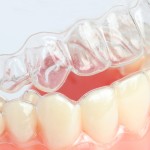
Retention is an essential phase of orthodontic treatment without which there is a tendency for teeth to return to their initial position. The aim of this review was to compare the effects of Hawley retainers (HRs) and vacuum-formed retainers (VFRs)
Searches were conducted in Cochrane Central Register of Controlled Trials (CENTRAL), Medline, Embase, ISI Web of Science, LILACS In addition, Pro-Quest Dissertation and Thesis database and Pro-Quest Science Journals. Hand searches were also carried out in American Journal of Orthodontics and Dentofacial Orthopedics, Angle Orthodontist, European Journal of Orthodontics, and Journal of Orthodontics. Study selection, data abstraction and risk of biases assessments were carried out independently by at least two reviewers. Randomized, quasi-randomized and controlled clinical trials were considered. Studies with at least 6 months follow up that included patients with maxillary retainers, mandibular retainers, or both were included. The primary outcomes included Little’s index of irregularity,intercanine width, intermolar width, and arch length related to the effectiveness of HRs and VFRs.
- 7 studies were included (5 RCT, 2 CCTs)
- 3 were considered to be at low risk of bias, 3 at moderate risk and one at high risk
- It was not possible to conduct a meta-analysis so a narrative summary was presented.
The authors concluded
Some evidence suggested that there are no differences with respect to changes in intercanine and inter-molar widths between HRs and VFRs after orthodontic retention. However, at present, there is insufficient evidence that VFRs are more effective than HRs.
In terms of occlusal contacts, cost-effectiveness, patient satisfaction, and survival time, there is also a lack of sufficient evidence of differences between these 2 retainers. In addition, no evidence concerning periodontal health was retrieved from the studies.
Therefore, this systematic review suggests that further high-quality RCTs regarding the differences between HRs and VFRs during orthodontic retention are necessary to determine which retainer is the better selection for orthodontists.
Comment
A Cochrane review by Littlewood et al last updated in 2006 has looked at retention procedures for orthodontic treatment. That review included 5 RCTs but looked at a wider range of retention procedures. This current review included 5 RCTs published since 2006 that focussed specifically on comparisons between HR and VFR, 3 of these were at low risk of bias 1 at medium risk and 1 at high risk although it appears that this may only represent 4 studies. So while additional trials have been published since the Cochrane review we still do not have good quality data to assess whether or not there is a difference between these two approaches to retention.
Links
Mai W, He J, Meng H, Jiang Y, Huang C, Li M, Yuan K, Kang N. Comparison of vacuum-formed and Hawley retainers: A systematic review. Am J Orthod Dentofacial Orthop. 2014 Jun;145(6):720-7. doi: 10.1016/j.ajodo.2014.01.019. PubMed PMID: 24880842.
Dental Elf 2nd Nov 2011 – Hawley and clear overlay retainers have similar survival times
Littlewood SJ, Millett DT, Doubleday B, Bearn DR, Worthington HV. Retention procedures for stabilising tooth position after treatment with orthodontic braces. Cochrane Database of Systematic Reviews 2006, Issue 1. Art. No.: CD002283. DOI: 10.1002/14651858.CD002283.pub3.

[…] Dental Elf – 4th Jun 2014 – Review finds insufficient evidence to determine whether Hawl… […]